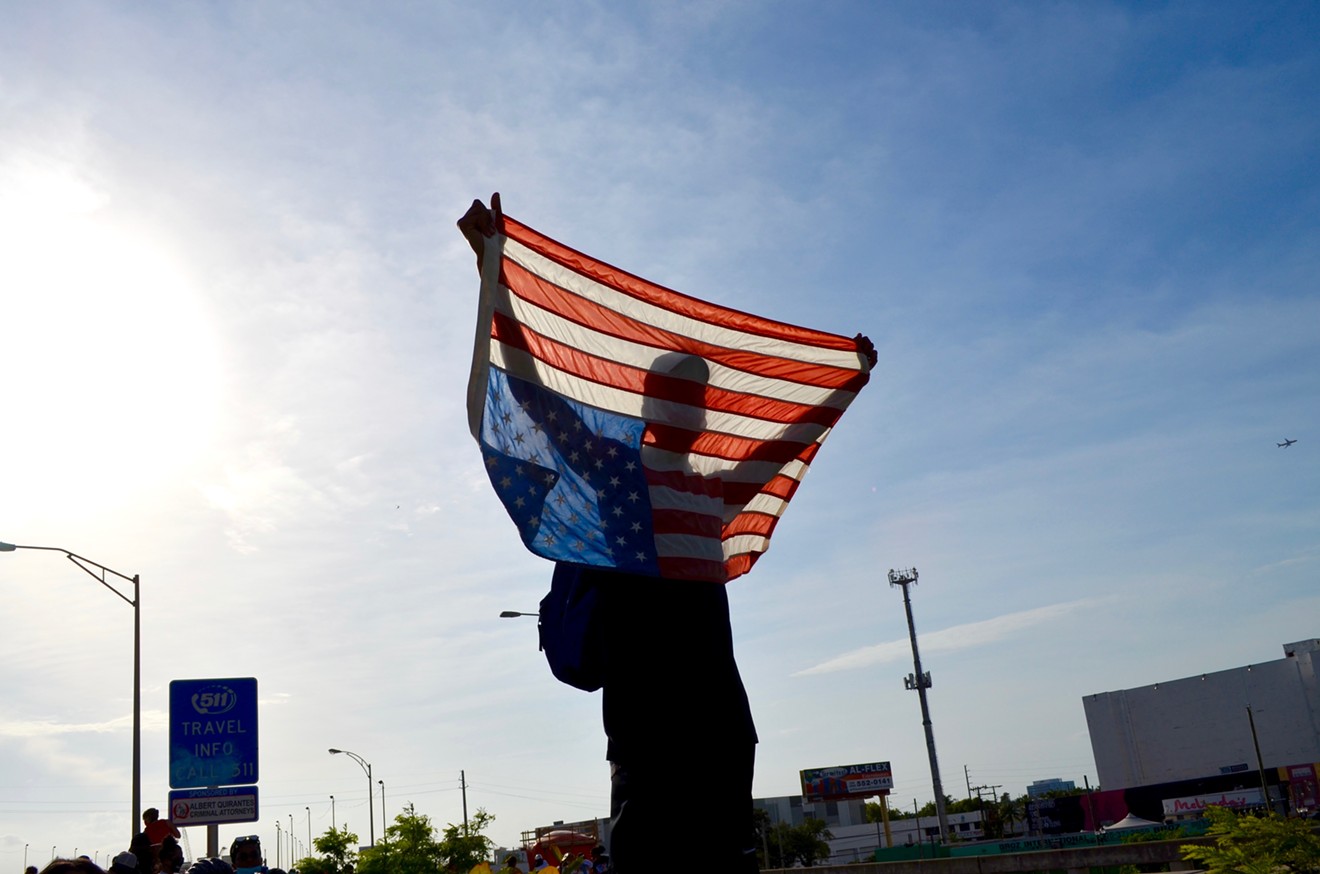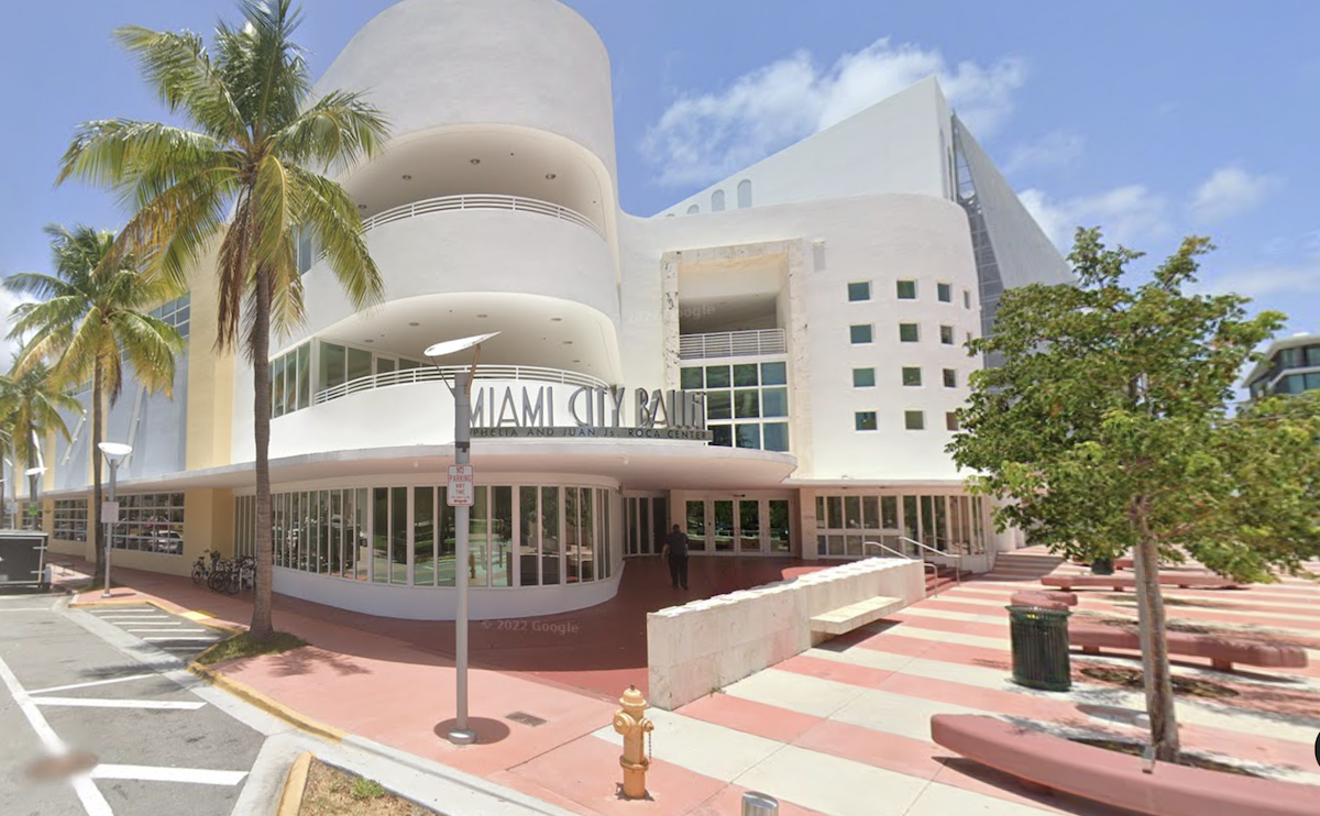Hundreds of people took to the streets on the second consecutive day of protests in Miami sparked by the killing of George Floyd, an unarmed man who died at the hands of police in Minneapolis. The activist group Dream Defenders, which organized the event, led the crowd for over four hours from downtown to midtown and back, stopping to kneel and cheer along the way.
Dream Defenders wanted to avoid a repeat of Saturday night, when police and protesters clashed outside Miami Police Department headquarters, resulting in the firing of tear gas and the burning of multiple police cars. Organizers held a training session before Sunday's march to teach volunteers how to deescalate violence within a crowd.
Not everyone at the march agreed with the peaceful approach to protesting: Activists were put to the test throughout the day as some protesters got into tense encounters with police, state troopers, and other law enforcement officers.
Sunday's march began at the American Airlines Arena and moved to the Federal Detention Center, where inmates banged on tiny windows from their cells as protesters chanted "Free the block!" from the street below. The group then headed back toward Biscayne Boulevard and approached the entrance to the Port of Miami, where those marching were met by two armored vehicles, a few dozen police cars, and a line of police clad in riot gear.
A few activists attempted to hold back the crowd, but a handful of protesters ran forward and one man yelled, "I will die for my freedom!" As the crowd approached the police line, some were pushed back while others were held back by fellow activists. One man shouted, "Bad people who use violence can only be stopped by good people who are better at violence," to which someone else responded, "We don't need another black body!"
After a few tense minutes, the police pulled back their special forces and replaced them with bicycle patrols in what appeared to be an effort to deescalate the situation. But shortly after, police announced a dispersal order for the area, saying anyone who remained near the port entrance would be subject to arrest.
Similar encounters took place at highway on-ramps and at the entrance to the Julia Tuttle Causeway on 36th Street and Biscayne. Each time, Dream Defenders and other activists were successful at pushing crowds away from police and maintaining a peaceful march.
At one point, people cheered as police got on their knees in what seemed to be a show of solidarity, only to realize the officers were kneeling to put on gas masks.
The City of Miami had set an 8 p.m. curfew, and as nightfall approached, tensions in the crowd grew. Around 8:30 at the Torch of Friendship, organizers with Dream Defenders encouraged demonstrators to return home.
"We have accomplished something remarkable here today," one announced. "This has been a day of peace, and the media will say nothing else. We are asking all of you to return home safely so we can continue to fight another day."
Most of the crowd began to leave, but one group announced that it would continue. "There are now two groups here," one organizer said. "Either you go home or you stay, but if you stay you must be prepared to be tear-gassed. Do you understand?"
Suddenly, a small group began attempting to smash the windows of a nearby CVS. Activists ran to stop them. Panic ensued as armored police vehicles approached and people ran in all directions. Someone set off what appeared to be a firework, adding to the confusion. Soon after, police announced that the group was violating the curfew and would be arrested or subject to less-lethal uses of force. Police charged into a group of remaining protesters.
The few dozen people who'd remained ran into the surrounding streets, and police bicycle patrols were dispatched to round up stragglers. A few blocks away from the CVS, on North Miami Avenue, around 30 police pinned one man to the ground and arrested him.

Scenes from a Sunday protest in Miami against the killing of George Floyd. See more photos from Sunday's protest here.
Photo by Atena Sherry
The question of agitators
On Sunday afternoon, Florida Sen. Marco Rubio tweeted that "domestic violent extremists have infiltrated, hijacked & taken advantage of the protests" around the nation.At the protests in Miami, there was a clear division among the protesters. But it was unclear whether the divide was due to an organized agitation effort or simply a difference of opinion.
Miami Police Chief Jorge Colina and Mayor Francis Suarez said that 13 of the 57 people arrested after Saturday's violence weren't from Miami. "So, we have Minnesota, New York. Georgia. People from outside of the county," Colina said.
But the Miami Herald cited Miami-Dade Corrections and Rehabilitation figures indicating that 30 of the 57 people arrested were from Miami-Dade County and 11 others had addresses in neighboring counties.
Officials around the nation have made statements claiming that radical agitators and extremist groups are inciting violence at protests. Minnesota Gov. Tim Walz suggested far-right white supremacists and possibly drug cartels may be involved in inciting chaos in Minneapolis. In other cities, the blame has been placed on far-left anti-fascists and anarchists. (President Donald Trump tweeted on Sunday that the federal government would be "designating ANTIFA as a Terrorist Organization.") There are also historical divisions within black activist movements about whether the violent actions of police justify violent retaliation.
At Sunday's protest in Miami, those divisions were on full display.
"Our unity and our togetherness is a show of force," said a man who asked not to be identified, "but we are still acting submissive, for what?"
One protester disagreed.
"I'm disappointed," said the woman, who said her name was Stephanie. "Everybody is so angry, and we have every right to be angry, but they are just channeling the anger in the wrong way."












